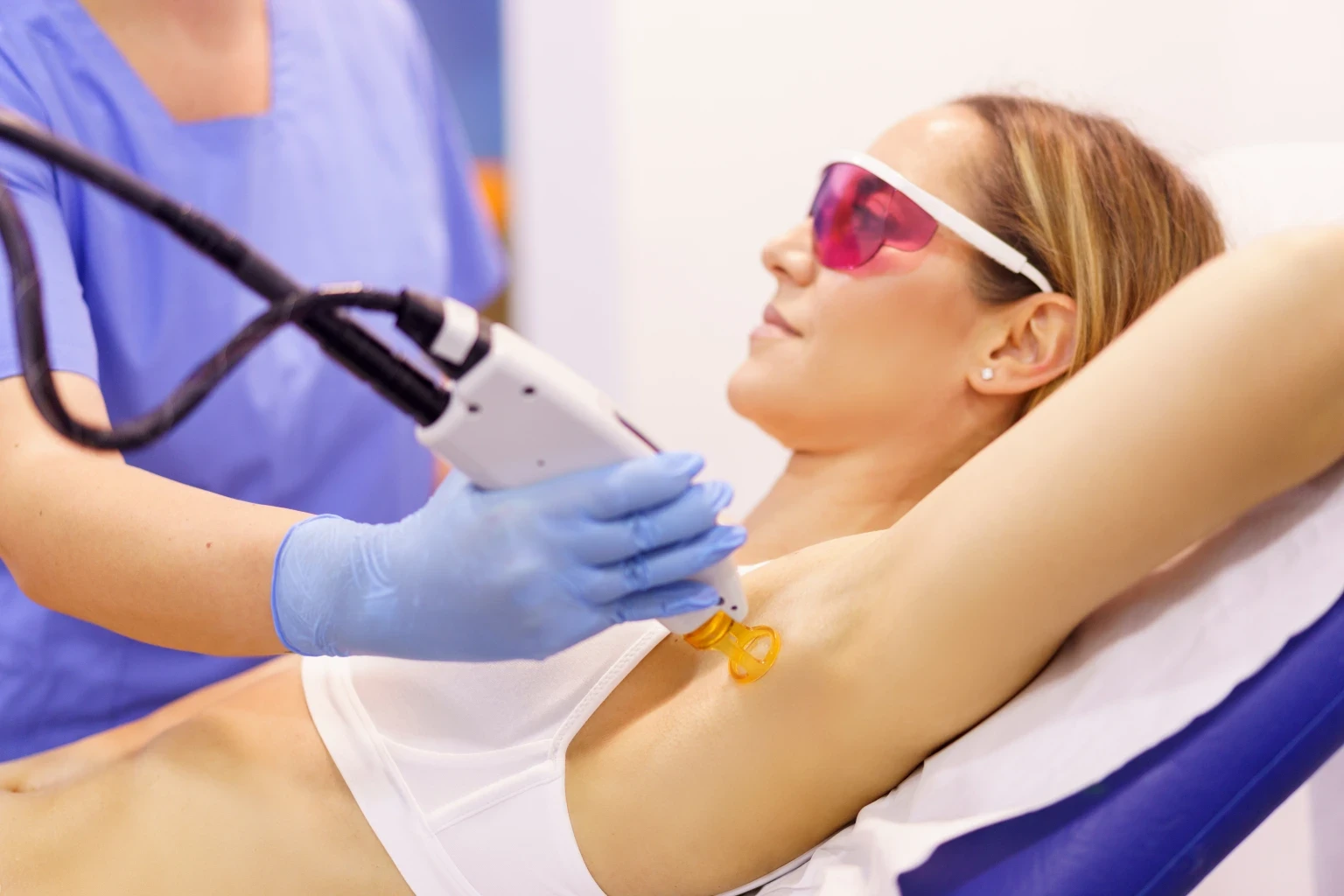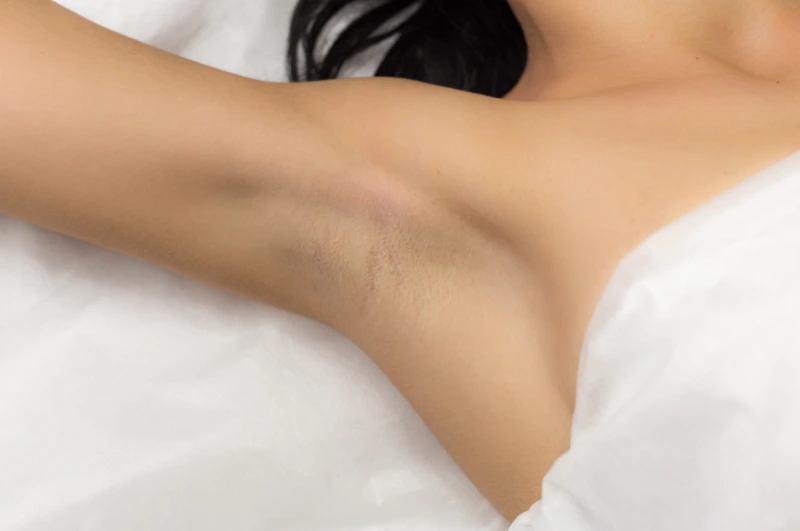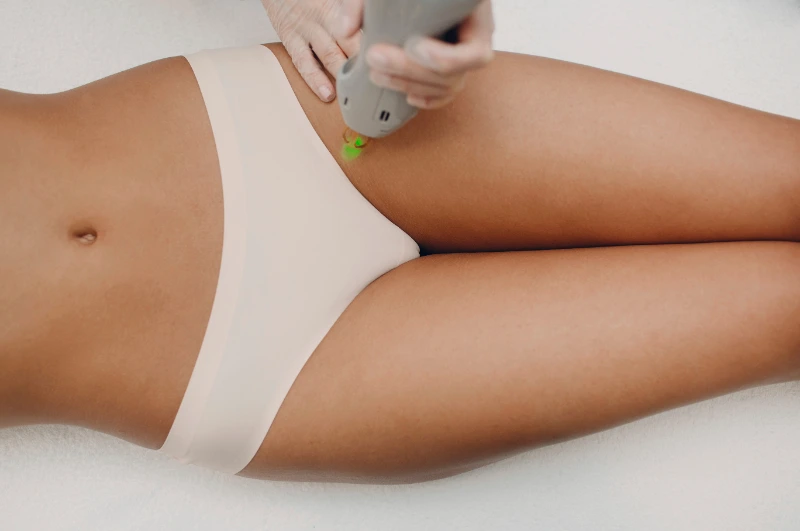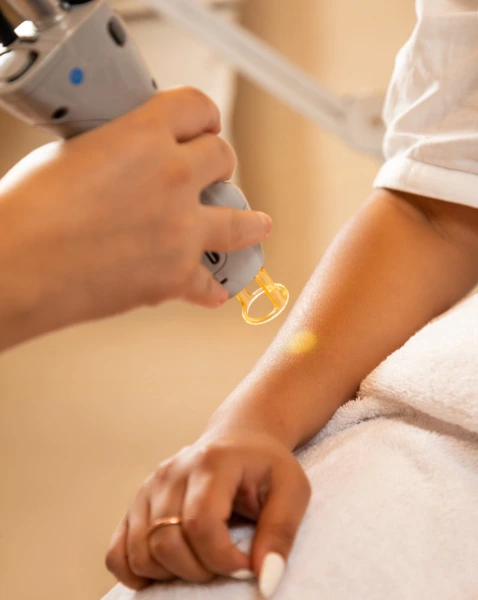
Laser hair removal is a highly effective way to remove body hair and facial hair. However, what you do before and after laser hair removal plays a huge role in its success. From proper skin preparation to post-treatment care, following the right steps will help you achieve the best results and avoid common side effects. This guide offers laser hair removal tips to ensure your skin stays smooth and irritation-free.
Prep for Laser Hair Removal: what to do before laser hair removal
Before your laser hair removal appointment, it’s crucial to prepare your skin correctly. This will help you avoid potential complications, such as red skin after laser hair removal or burns. Follow these steps to get ready:
- Avoid tanning: Stay out of the sun or tanning beds for at least six weeks before treatment. Laser targets hair follicles, and tanning can make it difficult for the laser to distinguish between your hair pigment and skin.
- Shave before treatment: Shave the treatment area within 24 hours of your appointment. Shaving ensures the laser focuses on the hair root, making the process more effective.
- Skip other hair reductionl methods: Avoid waxing, plucking, or tweezing for at least six weeks before treatment. These techniques remove the hair follicle, which is essential for the laser to effectively target..
- Review medications: Some medications, especially anti-inflammatory medications and antibiotics, can make your skin sensitive to the laser. Always inform your profession about any medications you’re taking.
- Avoid skincare products: Skip using products that include retinoids or glycolic acid at least a week before your session. These ingredients can irritate the skin and increase your chances of side effects.
By following these steps, you’ll set yourself up for a successful laser hair removal treatment.

Pre-Laser Treatment Checklist for Estheticians

Before starting a laser hair removal treatment, estheticians should follow a simple checklist to ensure client safety and the best results:
- Assess skin tone: For clients with darker skin, use lasers designed for higher melanin levels to avoid skin damage.
- Evaluate hair pigment: Laser targets the hair pigment, so it’s important to assess if the client’s hair is dark enough for the treatment.
- Review medications: Ensure the client isn’t using any products that increase sensitivity to light.
What to Expect During Your Laser Hair Removal Appointment
A typical laser hair removal appointment involves several steps. First, your technician will examine your skin to confirm it’s ready for treatment. You’ll wear protective goggles during the procedure to safeguard your eyes from the laser.
The laser targets the hair pigment within each hair follicle, which may feel like a quick snap against the skin. The duration of the treatment depends on the size of the treatment area. For example, smaller areas like the upper lip may take just a few minutes, while larger areas like the legs or back could take up to an hour.
While some discomfort is expected, most people find it tolerable. If needed, your technician can apply a numbing cream to help minimize discomfort.
Aftercare: How to Keep your skin safe
After laser hair removal, proper aftercare is just as important as your prep. Immediately after the treatment, your skin may feel like it has a mild sunburn. Here are a few aftercare guidelines to help ensure a smooth and comfortable recovery:
- Soothe the skin: Apply aloe vera or a cooling gel to reduce irritation and redness. You can also use fragrance-free lotions.
- Avoid hot showers and saunas: For at least 24-48 hours after treatment, avoid hot showers, steam rooms, and saunas. These can cause further irritation or lead to infection.
- Limit sun exposure: Stay out of the sun for at least 10 days after your session, and always wear sunscreen if you’re outside. Sun exposure can lead to scarring or redness after laser hair removal.
- Skip deodorant and perfumes: If you’ve had your underarms treated, avoid deodorant for at least 48 hours.
- Gently exfoliate: After a few days, gently exfoliate the treated area to help remove any dead hair and prevent ingrown hairs.
By following these laser hair removal tips, you can avoid complications like ingrown hairs and ensure your skin heals properly.
“Proper preparation and aftercare are the keys to maximizing the effectiveness of laser hair removal and minimizing side effects.” – Erin Foster, LA, Licensed Aesthetician
How Many Sessions Are Needed?

One of the most common questions about laser hair removal is how many sessions are necessary to see lasting results. Typically, patients need anywhere from 4-6 sessions, spaced 4-6 weeks apart, for full hair reductionl. Areas like the upper lip may require fewer treatments, while larger areas like the legs or back may need more.
Laser hair removal after 1 session may result in patchy regrowth, but this is normal. Each session targets hairs in different stages of their growth cycle. As you continue treatment, the hair will become thinner and lighter.

What Not to Do After Laser Hair Removal
There are certain things you should avoid to prevent irritation or complications. After your treatment:
- Don’t pluck or wax: These methods remove the hair root, which can disrupt the laser’s ability to target new hair growth.
- Skip tanning: Avoid tanning or using self-tanners for at least two weeks after your session. Tanning can increase the risk of burns or pigmentation issues.
- No harsh skincare products: Avoid retinoids, glycolic acid, and exfoliating scrubs for at least a week after your session.
Common Side Effects of Laser Hair Removal
While laser hair removal is generally safe, some side effects may occur. These are usually mild and temporary, but it’s good to be aware of the dangers of laser hair removal:
- Redness and swelling: Slight redness and swelling around the treated area are common and usually fade within a few hours.
- Ingrown hairs: Though laser hair reductionl helps reduce ingrown hairs, they can still occur. If you notice ingrown hairs, gently exfoliate the area and use a warm compress.
- Hyperpigmentation: Dark spots or pigmentation changes can happen, especially for those with darker skin. Make sure to follow all aftercare steps to minimize this risk.
After Laser Hair Removal, Does It Grow Back?
After laser hair removal, hair growth typically reduces over time. Some areas, like the upper lip, may experience finer regrowth. Hair that does return is usually lighter and thinner. Avoid using anti-inflammatory medications immediately after treatment, as they can interfere with healing. Regular sessions help achieve long-lasting, smooth results
FAQs
How to reduce redness after laser treatment?
To reduce redness after laser hair removal, use soothing lotions like aloe vera. Stay out of direct sunlight and use sunscreen as needed.
Can I use deodorant after laser hair removal?
Avoid using deodorant for at least 48 hours after treatment on your underarms to prevent irritation.
Can I wax before laser hair removal?
No, avoid waxing or plucking for at least six weeks before your appointment. The laser targets the hair root, and waxing removes it.
Do you need to shave before laser hair removal?
Yes, you should shave the treatment area within 24 hours before your appointment. This allows the laser to effectively target the hair follicle.
How long after laser can I shave?
You can shave once any redness or irritation has subsided, usually within a few days after treatment. However, avoid plucking or waxing between sessions.
How long does the laser hair removal last?
Results vary, but most people experience long-term hair reduction for months or even years. Hair that grows back will be finer and less noticeable.

Final Thoughts: Achieving the Best Results with Laser Hair Removal

Laser hair removal offers an excellent option for achieving long-term hair reduction. By following these before and after laser hair removal tips, you can achieve smooth, hair-free skin with minimal side effects. Be sure to follow all preparation and aftercare instructions closely for the best results. If you have any concerns, consult a professional for personalized advice based on your skin and hair type.
For expert laser hair removal treatment, consider visiting Spade Skin Care, where skilled professionals tailor treatments to your unique needs for optimal results.
